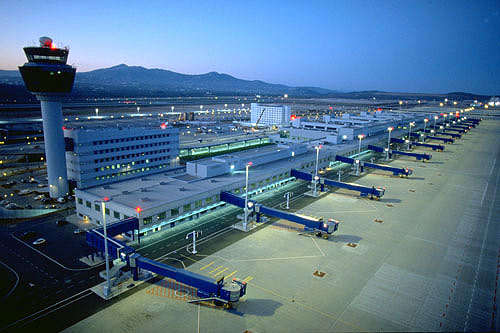European airport trade body ACI EUROPE released its air traffic report for March 2023 and full quarter 1 2023 (Q1).
Passenger traffic kept recovering in the first quarter across the European airport network, as volumes increased by +49% compared to the same period last year. The growth somewhat slowed down in March at +34%, reflecting the fact that travel restrictions were being lifted at that time last year, and passenger traffic had started recovering as a result.
Passenger traffic in the first quarter was just -10.6% below pre-pandemic (Q1 2019) levels. International passenger traffic keeps driving the recovery and getting closer to pre-pandemic levels (-9%), while domestic passenger traffic is lagging behind (-18.5%). This is pointing to structural market changes resulting from factors including changing consumer behaviours and modal shifts.
By the end of March, 45% of Europe’s airports had recovered or exceeded their pre-pandemic volumes – up from 40% in February.
PERFORMANCE VARIATIONS REFLECTING RECOVERY PATTERNS & THE WAR IN UKRAINE
EU+ airports1 saw passenger volumes increasing by +53.4% in the first quartercompared to the same period last year.
When compared to pre-pandemic (Q1 2019) levels, EU+ passenger traffic stood at -11.5% - but with significant divergences in performance. This reflects a recovery still predominantly driven by leisure and blended demand as well as selective capacity expansion from Ultra-Low-Cost Carriers, along with the impact of the war in Ukraine:
- Airports in Portugal (+15.2%), Croatia (+12.1%), Luxembourg (+9.1%) and Cyprus (+8.4%) well exceeded their pre-pandemic volumes.
- Conversely, airports in Slovakia (-44.9%), Slovenia (-41.2%), Germany (-32.2%), the Czech Republic (-29.7%) and Finland (-26.2%) remained the farthest from a full recovery.
- Amongst the largest EU+ markets – and aside from the underperformance of German airports (also resulting from industrial action) - airports in Spain (+1.7%) posted the best results followed by those in Italy (-6.8%), France (-11.4%) and the UK (-12.9%).
At airports in the rest of Europe2, passenger traffic grew by +30.2% in the first quarter compared to the same period last year.
When compared to pre-pandemic (Q1 2019) levels, passenger traffic in the rest of Europe outperformed the EU+ market at just -6%.
While airports in Ukraine (-100%) have lost all of their passenger traffic for more than a year, those in Russia (+4.5%) managed to remain above their pre-pandemic volumes in the first quarter as passenger demand has shifted to domestic and non-EU+ markets. This boosted the performance of airports in Uzbekistan (+112.5%), Kazakhstan (+55.1), Armenia (+37.6%) and Serbia (+26.3%).
Meanwhile airports in the major market of Turkey (-4.9%) came close to a full recovery and those in Albania (+91%) achieved impressive growth thanks to the capacity deployed by Ultra-Low-Cost Carriers.
MAJORS & LARGE AIRPORTS SHOW SLOWER RECOVERY
Passenger traffic at the Majors (top 5 European airports in 20193) grew by +52.4% in the first quarter compared to the same period last year. Volumes remained -11.2% below pre-pandemic (Q1 2019) levels due to lower hub carrier capacity deployment and the impact of the re-opening of China still limited.
Amongst the current top 5 European airports4 Istanbul (+5.9%) and Madrid (0%) were the only ones having recovered their pre-pandemic (Q1 2019) levels.
London-Heathrow (-5.7%) re-established itself as the busiest European airport, followed by Istanbul, Paris-CDG (-13.2%), Madrid and Amsterdam-Schiphol (-20.8%).
The German hubs - Frankfurt (-23.3%) and Munich (-30.1%) significantly under-performed their peers, with lower Low-Cost Carrier penetration and strikes being contributing factors.
Meanwhile, the resilience of leisure demand to inflationary pressures and higher air fares and the reliance on Low-Cost Airline traffic resulted in a number of other large5 and capital airports exceeding their pre-pandemic volumes in the first quarter: Lisbon (+13.9%), Tel Aviv (+14%), Palma de Mallorca (+2.4%), Athens (+2.3%) and Dublin (+1.9%).
LOW-COST BASES & SELECTED REGIONALS OUTPERFORMING
These same recovery patterns and market dynamics were to the continued benefit of a number of large Ultra-Low-Cost airport bases: Beauvais (+34.3%), Bergamo (+19.7%) and Charleroi (+16%).
They also benefitted regional and smaller airports6 where passenger traffic in the first quarter was just –4.5% below their pre-pandemic (Q1 2019) volumes. Those serving popular tourist destination and/or relying on Low-Cost Carriers posted impressive performances, including: Kutaisi (+61.4%), Varna (+59.1%), Madeira(+43.5%), Asturias (+36.4%), Memmingen (+40.3%), Trapani (+31.9%) Rotterdam(+26.8%), Lodz (+36.7%), Paphos (+29.1%) and Chania (+20.6%)
FREIGHT & AIRCRAFT MOVEMENTS
Freight traffic across the European airport network decreased by -8.7% in the first quarter compared to the same period last year – and stood at -7.9% compared to its pre-pandemic (Q1 2019) level.
Frankfurt (-13% compared to Q1 2019) was the busiest European airport for freight traffic, followed by Leipzig (+16%), Amsterdam-Schiphol (-13%), London-Heathrow(-22%) and Istanbul (-28%).
Aircraft movements increased by +24% in the first quarter across the European airport network compared to the same period last year, with airports in the EU+ markets at +25.1% and those in the rest of Europe at +18.2%.
DATA BY AIRPORT GROUPS
During the first quarter, airports welcoming more than 25 million passengers per year (Group 1), airports welcoming between 10 and 25 million passengers (Group 2), airports welcoming between 5 and 10 million passengers (Group 3) and airports welcoming less than 5 million passengers per year (Group 4) reported an average adjustment of -12.2%, -11%, -4.3% and -6.2%, as compared to pre-pandemic traffic levels (Q1 2019).
The airports that reported the highest increases in passenger traffic for Q1 2023 when compared with Q1 2019 are as follows:
GROUP 1: Lisbon (+13.9%), Istanbul IST (+5.9%), Palma de Mallorca (+2.4%), Athens (+2.3%) and Dublin (+1.9%).
GROUP 2: Milan BGY (+19.7%), Tel Aviv (+14%), Catania (+12.6%), Porto (+12.1%)and Naples (+9.2%).
GROUP 3: Sochi (+79.6%), Almaty (+55.1%), Belgrade (+26.9%), Charleroi (+16.0%) and Krakow (+15.7%).
GROUP 4: Tirana (+91%), Varna (+59.1%), Madeira (+43.5%), Memmingen (+40.3%) and Yerevan-Zvartnots (+37.6%).
Tags: ACI EUROPE
